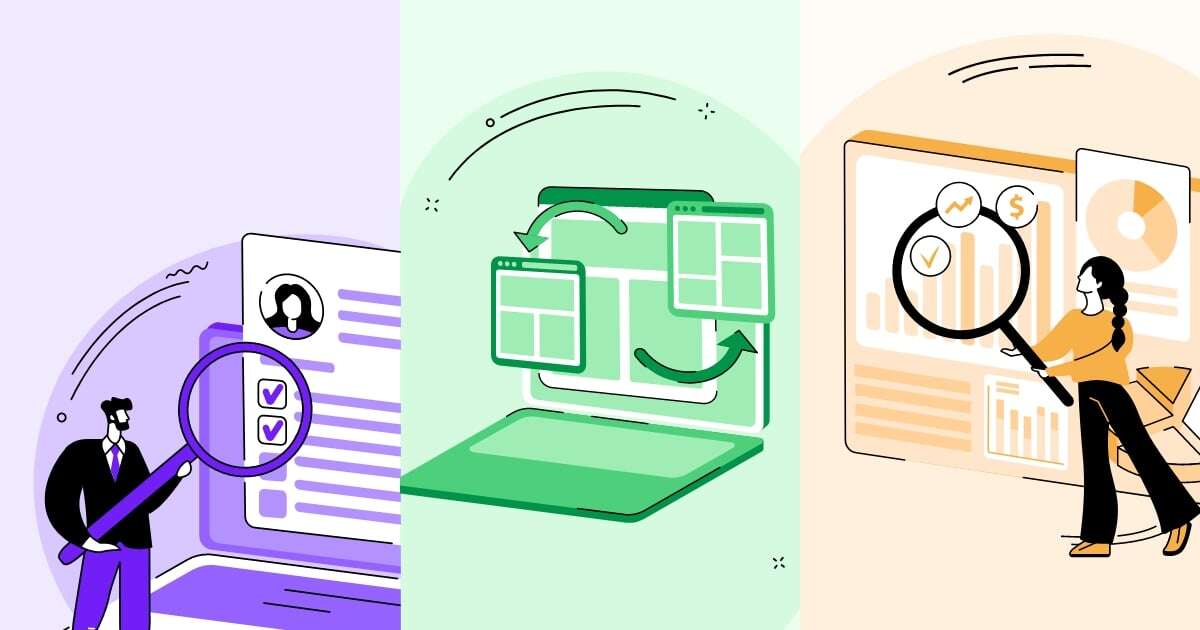The vendor lifecycle is a series of intricate processes that ensures consistent and proper management of your vendor relationship. Not only is it a best practice to actively manage this lifecycle, but it’s also a regulatory expectation. Whether you’re in the process of performing due diligence, managing the contract or offboarding the vendor, you likely have vendors in each stage of the lifecycle at any given time. With all these moving pieces, it’s essential to understand how to manage the entire vendor lifecycle at all different stages.
Importance of Vendor Lifecycle Management
Organizations often rely on third-party vendors to provide necessary products and services, but it’s important to remember that vendor relationships are inherently risky. Effective management of the vendor lifecycle ensures that your organization meets regulatory requirements, limits risk exposure and also provides a solid foundation for your vendor relationships. Vendor risks can emerge or evolve throughout your relationship, so managing the lifecycle as a whole will better protect your organization from these various risks.

Overview of the Vendor Risk Management Lifecycle
First, let’s review the main elements of the vendor lifecycle, which are outlined in three distinct stages.
The three stages of the vendor risk management lifecycle:
- Onboarding: Before you begin vendor onboarding, you’ll need to determine what’s in scope for your lifecycle by defining what a vendor, third party or service provider is to your organization. Your organization will likely interact with many different entities, such as customers and clients, who don’t need to undergo the lengthy vendor lifecycle process.
After this step, the onboarding process begins by identifying the level of risk inherent to the vendor’s products or services and determining whether the vendor is critical to your internal operations. Once you know the vendor’s inherent risk and criticality, you can move on to performing due diligence, which leaves you with residual risk. This is the remaining risk after controls have been implemented to mitigate inherent risk. You can then decide whether further action is required.
The onboarding stage ends with vendor selection and contract management, which includes planning, drafting, negotiating, approving and executing the contract.
- Ongoing: This provides the constant review and assessment of new and emerging risks in the vendor’s risk profile. It also ensures the vendor is meeting all required service level agreements throughout the life of the relationship.
- Offboarding: Regardless of the reason for termination, it’s essential to establish a formal process for offboarding a vendor to avoid loose ends and any potential gaps in your operations. This includes the implementation of an exit strategy, which may be accounting for replacement vendors, bringing the outsourced activity in-house or terminating the activity. Offboarding also includes critical details on data return or destruction and record retention requirements.

Supporting Elements of the Lifecycle
In addition to these three stages, the vendor lifecycle includes three supporting elements that help set the foundation:
- Oversight & Accountability: Managing the lifecycle often requires support from different departments like information security, compliance and legal. This element of oversight and accountability will ensure that the necessary individuals or departments are clearly defined in your overall vendor risk management program.
- Documentation & Reporting: Governance documents can be used to establish roles and responsibilities within your organization as they relate to the vendor lifecycle. This may include a policy that states what needs to be accomplished, a program that details how to implement the policy and step-by-step procedures that explain how to accomplish the requirements.
- Independent Review: Third-party assessors and independent auditors are helpful assets that can test your program to ensure it meets regulatory guidance. These independent reviews can often provide valuable feedback for improvements that you otherwise might overlook.

Common Mistakes to Avoid
Managing the vendor lifecycle can be challenging for anyone, even those with years of experience. It helps to be aware of some common mistakes that you might face when trying to manage all the various processes:
- Insufficient documentation: Unless a task or process is formally documented, you can’t prove it happened. Auditors and examiners expect that there will be sufficient documentation to evidence adherence to policy, especially for critical and high-risk vendors.
- Poor communication: Managing the vendor lifecycle requires the involvement of many individuals, often in different departments. When issues aren’t effectively communicated, you risk creating more significant problems that ultimately take more time and resources to fix.
- Infrequent monitoring: Don’t make the mistake of thinking that the vendor relationship is all set once you sign the contract. The lifecycle should be regularly monitored to provide consistency and to address new or emerging risks as they appear.
3 Tips for Effective Lifecycle Management
To make sure your vendor lifecycle is operating at its ideal performance, consider the following three tips:
- Automate when possible. With so many repetitive and time-consuming tasks required to manage the vendor lifecycle, it may be worth considering how to automate some of your processes. Automation enhances consistency and quality while helping to reduce the workload it takes to manage your third-party risk management processes.
- Collaborate with subject matter experts. Whether you have access to internal subject matter experts (SMEs) or need to outsource that function to an external provider, SMEs are necessary to obtain qualified assessments of vendor relationships and their risks to your organization.
- Create reportable data. The process required to manage vendors throughout the lifecycle produces an abundance of data, which needs to be both reportable and relevant to the appropriate leaders in your organization. By providing valuable data to the board and senior management, they’ll be better prepared to make strategic decisions.
While some stages of the vendor lifecycle will require more time and resources, every process should be acted upon with equal consideration. Successfully managing the vendor risk management lifecycle isn’t without its challenges. Still, it’s a critical activity that will help protect your organization from third-party risk.





